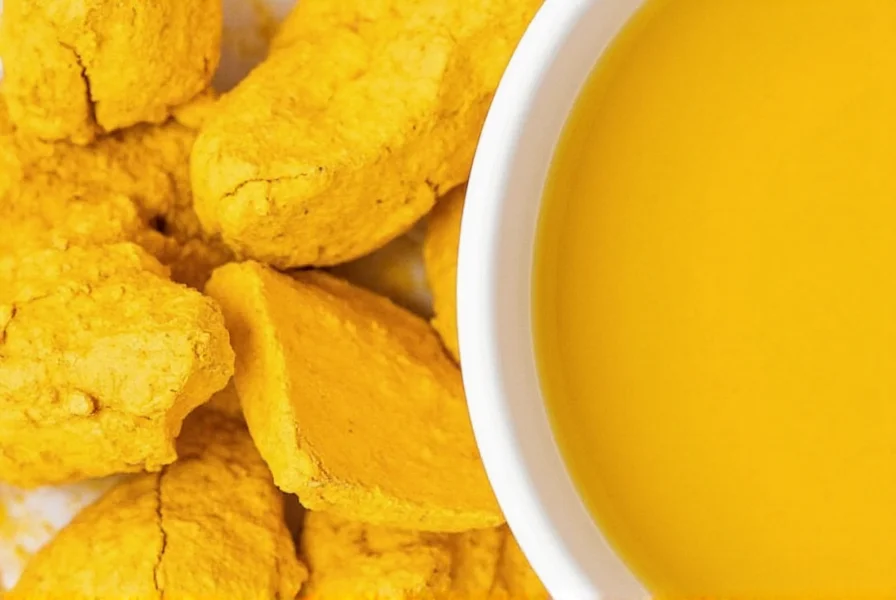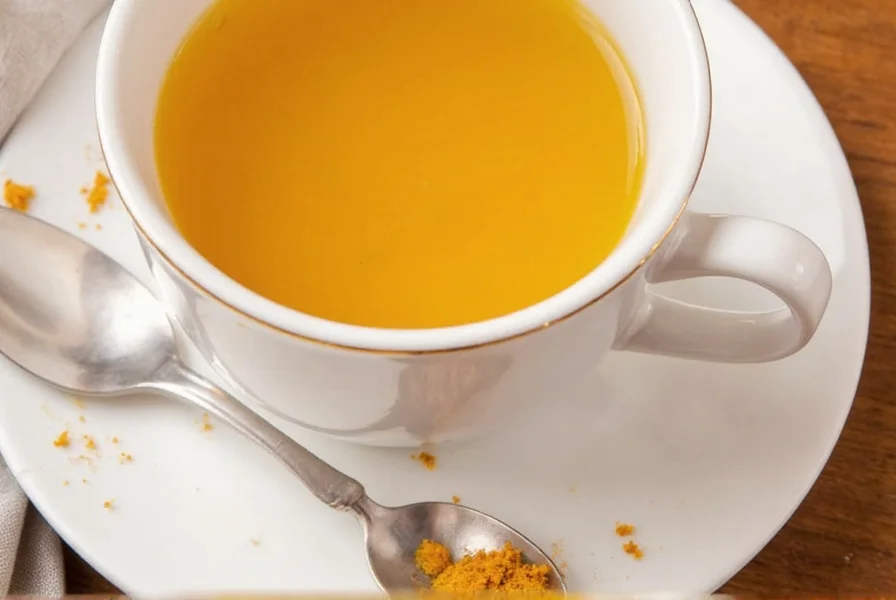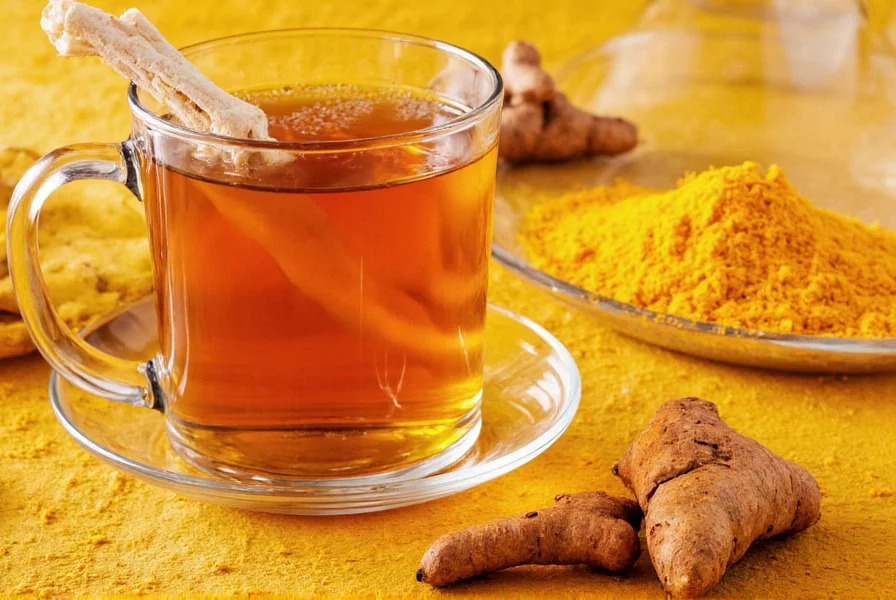Turmeric tea, often called “golden milk” when made with dairy or plant-based milk, has gained worldwide popularity for its vibrant color and potential health benefits. This ancient Ayurvedic remedy combines the powerful anti-inflammatory properties of turmeric with complementary ingredients that enhance its bioavailability and flavor profile. While the basic preparation is straightforward, understanding the science behind the ingredients and proper preparation techniques can significantly improve both the taste and effectiveness of your homemade turmeric tea.
The Science Behind an Effective Turmeric Tea Recipe
Curcumin, the active compound in turmeric responsible for most of its health benefits, has notoriously low bioavailability when consumed alone. Research shows that combining turmeric with black pepper (which contains piperine) can increase curcumin absorption by up to 2,000%. Similarly, adding a healthy fat source like coconut oil or preparing the tea with milk can further enhance absorption since curcumin is fat-soluble.
| Key Ingredient | Function | Recommended Amount |
|---|---|---|
| Turmeric (fresh or ground) | Primary source of curcumin | ½ tsp ground or 1" fresh root |
| Black pepper | Enhances curcumin absorption | A generous pinch |
| Lemon juice | Adds vitamin C, balances flavor | 5-10 ml (1-2 tsp) |
| Honey or maple syrup | Natural sweetener | To taste |
| Ginger | Additional anti-inflammatory | ¼" fresh or ¼ tsp ground |
Step-by-Step Preparation Guide
Follow these detailed instructions for the perfect cup of turmeric tea every time. This method maximizes both flavor and health benefits while avoiding common preparation mistakes.
- Measure 1 cup (240ml) of fresh, filtered water into a small saucepan
- Add ½ teaspoon of ground turmeric OR 1-inch piece of fresh turmeric root (peeled and grated)
- Include ¼ teaspoon of freshly grated ginger (optional but recommended)
- Add a generous pinch of freshly ground black pepper
- Place over medium heat and bring to a gentle simmer (do not boil vigorously)
- Reduce heat to low and let simmer for 10 minutes, allowing flavors to meld
- Remove from heat and add 5-10ml of fresh lemon juice
- Strain through a fine mesh sieve into your cup
- Add honey or maple syrup to taste (optional)
- Stir well and enjoy while warm

Optimizing Your Turmeric Tea Experience
Certain preparation techniques significantly impact both the effectiveness and enjoyment of your turmeric tea. Many people make the mistake of simply pouring boiling water over turmeric powder, which doesn't properly extract the beneficial compounds. Simmering allows for better extraction of curcuminoids while preventing the harsh bitterness that can occur with improper preparation.
For those seeking maximum health benefits, consider these evidence-based enhancements to your basic turmeric tea recipe:
- Fat inclusion: Add 1 teaspoon of coconut oil or prepare with full-fat coconut milk to increase curcumin absorption
- Temperature control: Never boil turmeric vigorously as high heat can degrade beneficial compounds
- Fresh vs. dried: Fresh turmeric root contains higher levels of volatile oils and may offer superior flavor and potential benefits
- Timing: Consume turmeric tea between meals for optimal absorption, as dietary fats can enhance bioavailability
Popular Variations for Different Preferences
While the basic turmeric tea recipe is excellent on its own, numerous variations cater to different taste preferences and health goals. These adaptations maintain the core health benefits while offering diverse flavor profiles.
Cold Brew Turmeric Tea
For those who prefer iced beverages, combine 2 cups of cold water with 1 teaspoon of turmeric, the juice of half a lemon, and a pinch of black pepper. Refrigerate overnight, then strain and serve over ice. This method produces a smoother, less bitter flavor profile.
Golden Milk Turmeric Tea
Replace water with 1 cup of your preferred milk (dairy or plant-based). Heat gently without boiling, then add turmeric, black pepper, and optional cinnamon or cardamom. This version provides additional fat for better curcumin absorption and creates a creamier texture.

Common Preparation Mistakes to Avoid
Even with the simplest recipes, certain errors can diminish both the flavor and potential health benefits of your turmeric tea. Being aware of these common pitfalls will help you create consistently excellent results.
- Using insufficient black pepper: Without adequate piperine, curcumin absorption remains low
- Over-boiling: Extended high-heat exposure can degrade beneficial compounds
- Skipping the fat component: Curcumin is fat-soluble, so including healthy fats improves absorption
- Using poor quality turmeric: Choose organic, high-curcumin varieties when possible
- Adding honey to boiling liquid: High heat can alter honey's beneficial properties
Storage and Consumption Guidelines
While turmeric tea is best enjoyed fresh, you can prepare larger batches for convenience. Store cooled tea in an airtight glass container in the refrigerator for up to 3 days. When reheating, do so gently over low heat without boiling to preserve the beneficial compounds.
For optimal health benefits, many wellness experts recommend consuming turmeric tea once daily. The best time to drink it depends on your goals—morning consumption may support daytime inflammation management, while evening consumption might promote better sleep quality due to turmeric's potential calming effects.
Frequently Asked Questions
How much turmeric should I use for one cup of tea?
For a single serving, use ½ teaspoon of ground turmeric or 1-inch piece of fresh turmeric root. Using more than 1 teaspoon of ground turmeric per cup may create an overly bitter flavor and could potentially cause digestive discomfort in sensitive individuals.
Can I make turmeric tea without black pepper?
Yes, you can make turmeric tea without black pepper, but you'll miss out on the significant absorption boost provided by piperine. Research shows that black pepper can increase curcumin absorption by up to 2,000%. If you dislike black pepper's flavor, try using just a small pinch, which provides the absorption benefit without overwhelming the taste.
How long should I simmer turmeric for optimal benefits?
Simmer turmeric tea for 10 minutes over low heat. This duration allows for proper extraction of curcuminoids without degrading the beneficial compounds through excessive heat exposure. Avoid boiling vigorously, as high temperatures can break down some of the delicate phytochemicals in turmeric.
Is fresh turmeric better than powdered for tea?
Fresh turmeric generally contains higher levels of volatile oils and may offer superior flavor and potentially greater health benefits compared to dried powder. However, high-quality organic turmeric powder remains an excellent option when fresh turmeric isn't available. If using powder, choose a reputable brand that tests for curcumin content and purity.
Can I drink turmeric tea every day?
Most people can safely enjoy turmeric tea daily in moderate amounts (1-2 cups). However, individuals with gallbladder issues, those taking blood thinners, or people with turmeric allergies should consult their healthcare provider first. The recommended daily intake of curcumin from all sources typically ranges from 500-2,000mg, which translates to approximately ¼ to 1 teaspoon of turmeric powder per day.











 浙公网安备
33010002000092号
浙公网安备
33010002000092号 浙B2-20120091-4
浙B2-20120091-4